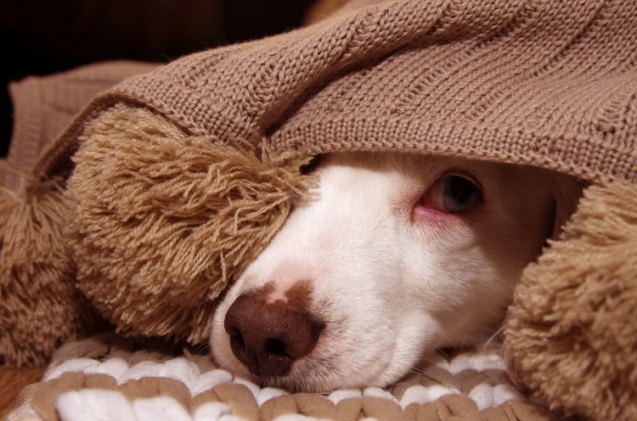How Can I Ease My Dog's Separation Anxiety When I Leave the House?

You're your dog’s best friend and their favorite human – and at the end of the day, no one likes to be away from their dearest and most loved person, right? That’s exactly the viewpoint of your little pooch, who’ll hate it when you go out, even if for an hour. They can’t tell the time, they only know they are alone and they don’t like it a bit. When these feelings are magnified, the result is separation anxiety, a condition in dogs characterized by intense distress or anxiety when they are separated from their owners or left alone. It is a common behavioral problem and can manifest in various ways, including destructive behavior, excessive vocalization, pacing, drooling, house soiling, or even self-injury. All of this can be challenging, but there are several strategies you can try to ease your dog's anxiety when you leave the house.
What are the Common Signs of Separation Anxiety?
Not all dogs are the same, and some could react differently when they are separated from you. It all depends on the breed, their relationship with you, and their own personality. But if symptoms of separation anxiety do appear, they should be easy to recognize. Here are some of the most common symptoms to look out for:
- Excessive barking, howling or whining when left alone
- Destructive behavior, such as chewing furniture or household items
- Urinating or defecating indoors, even when house-trained
- Attempts to escape or digging at doors or windows
- Pacing, restlessness, or excessive panting
- Loss of appetite or decreased interest in food
- Excessive salivation or drooling
Addressing separation anxiety takes time and patience. It's important to approach the problem systematically and be consistent in your efforts. With the right approach and support, you can help your dog overcome separation anxiety and feel more comfortable when you leave the house. Of course, you should first understand why it appears in the first place.
What Causes Separation Anxiety in Dogs?
If you are a new dog owner, it will work in your favor to know what causes separation anxiety, so you can quickly eliminate it from your pet’s future. These are the main causes:
- Lack of socialization: Dogs that have not been adequately exposed to being alone or have had limited experiences with different environments or people may be more prone to separation anxiety. Don’t neglect your pet’s basic needs – spend time with them, in play and mental stimulation. Always provide company for them.
- Life changes: Major life changes such as moving to a new home, a change in the family structure, or the loss of a family member can trigger separation anxiety in dogs. A major break in the established routine can have profound effects on dogs.
- Previous abandonment or trauma: Dogs that have experienced abandonment, neglect, or traumatic events may develop separation anxiety as a result of their past experiences. If you are rescuing a pet from a shelter, keep this in mind. Inquire about their past.
- Overattachment: Dogs that form an excessively strong bond with their owners and become overly dependent on them are more likely to develop separation anxiety. This can happen to single owners especially.
How to Deal with Separation Anxiety in Dogs?
There are a number of ways that you can counter separation anxiety and eliminate it altogether. Remember that it is crucial to stay consistent and patient.
- Maintain a routine: Dogs largely depend on routine, so establish a predictable schedule for your departures and arrivals. This helps your dog anticipate your comings and goings, reducing anxiety.
- Establish a safe space: Designate a specific area in your home where your dog feels secure and comfortable. Use this space for relaxation and provide comforting items like bedding, toys, and maybe even an article of your clothing that carries your scent.
- Use toys that are engaging and stimulating: Keep your dog mentally stimulated and occupied while you're away by providing interactive toys that dispense treats or require problem-solving. This can distract and entertain your dog, reducing anxiety. Snuffle mats and nosework toys such as this fun design are a good choice, too, as there’s no better way to keep a pooch occupied than to give them treats they need to sniff out.
- Use calming treats and chews: You can also try utilizing special calming chews and treats that reduce anxiety and calm a restless dog. If you are popping out for just an hour or two, these can be a solid solution. Hemp chews such as these are loved by pet parents because they are completely natural and based on plants and herbs that have a proven calming effect on our canine friends.
If your dog's separation anxiety persists or is severe, consider consulting a professional dog trainer or a veterinary behaviorist. They can provide personalized guidance and develop a behavior modification plan.

A proud mama to seven dogs and ten cats, Angela spends her days writing for her fellow pet parents and pampering her furballs, all of whom are rescues. When she's not gushing over her adorable cats or playing with her dogs, she can be found curled up with a good fantasy book.
More by Angela Vuckovic

























